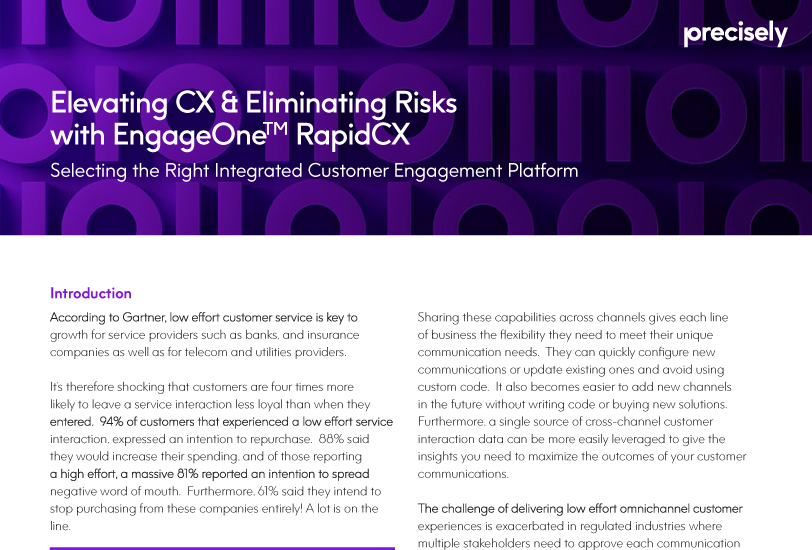White Paper
Elevating CX & Eliminating Risks with EngageOne™ RapidCX
Selecting the Right Integrated Customer Engagement Platform
According to Gartner, low effort customer service is key to growth for service providers such as banks, and insurance companies as well as for telecom and utilities providers.
It’s therefore shocking that customers are four times more likely to leave a service interaction less loyal than when they entered. 94% of customers that experienced a low effort service interaction, expressed an intention to repurchase. 88% said they would increase their spending, and of those reporting a high effort, a massive 81% reported an intention to spread negative word of mouth. Furthermore, 61% said they intend to stop purchasing from these companies entirely! A lot is on the line.
An Amazon-like experience has become most peoples’ expectation and customers now expect similar omnichannel experiences from all their service providers. This has led many businesses to increase the channels on which they engage customers, often implementing new solutions for each new channel. Customers expect interactions across all channels to be consistent. However, it’s challenging to deliver seamless and relevant customer communications throughout each customers’ journey, if none of the channels share underlying design, data models, or approval workflows.
Sharing these capabilities across channels gives each line of business the flexibility they need to meet their unique communication needs. They can quickly configure new communications or update existing ones and avoid using custom code. It also becomes easier to add new channels in the future without writing code or buying new solutions. Furthermore, a single source of cross-channel customer interaction data can be more easily leveraged to give the insights you need to maximize the outcomes of your customer communications.
The challenge of delivering low effort omnichannel customer experiences is exacerbated in regulated industries where multiple stakeholders need to approve each communication update and audit trails of all updates are required for compliance.
When your call center volume increases with questions about a new communication, call hold times increase and customers get frustrated. As much as you’d like to make rapid updates to your communications to better explain the topics customers are calling about, common reality is that it takes many businesses 2-3 months, sometimes longer, to update a communication and associated business rules. Besides typically complex and disparate approval processes for approving communication changes, there is often a heavy reliance on IT and, or outside vendors for making these updates via a traditional software release cycle. All this makes it challenging to get updates into production quickly to meet the business needs.
Read this white paper and learn more about making sure an integrated customer engagement solution delivers the maximum return on your investment.
